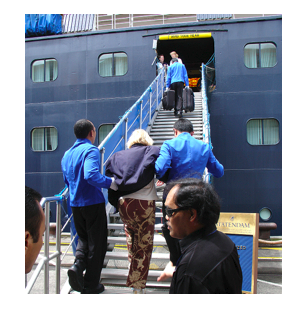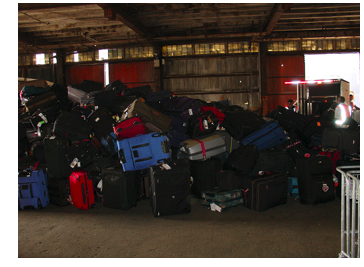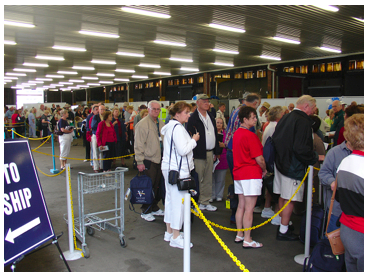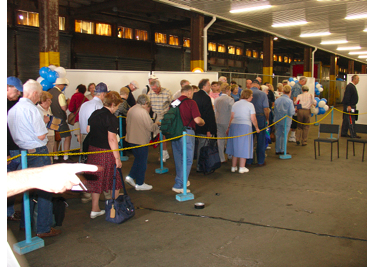I can be careless and I can be hasty and that gets me into trouble from time to time, but today I broke new ground by setting our house on fire.
There is a two-storey house behind ours. It is grand in its own way, and a spectacle; its walls of Sydney sandstone blocks arrived here as sailing ship ballast, and the cracks in their grouting are quite large enough to easily wedge in a paperback.
Nonetheless, spectacle or not, who wants to look at a wall? It was shielded by a long stand of bamboo when we moved in 20 years ago. It was scruffy and eventually we cut down the lot. Immediately two things happened: our neighbours in the grand house invited us over for dinner to thank us for letting in the light, and we realised we had to replace the bamboo. Who wants to look at a wall?
We settled on a selection of trees - a few natives and two Mexican Evergreen Alders. We got some good big specimens from the Big Tree Company, dug some good deep holes for them, and to hasten the process we threw in a nice big helping of Mag-Amp capsules. It's what plants crave.
I swear if you looked slowly you could see those Alders grow before your eyes. They had beautiful deep green leaves, and delicate branches that swayed gently in the summer breeze. They were perfectly formed and they came thrusting out of the ground and surging past our roof as though rocket-propelled.
Before long we had ample screening. Before long, they were too big for us to prune. Before long we were getting them pruned by men with climbing gear.
And then the trifold door to the deck began to jam. We packed out the pile below, and freed it up, but then winter came, and the problem returned. We adjusted the pile. It freed up again. Summer came and the door jammed again. It gradually dawned on us: the clay ground beneath the door was drying out in the summer heat, and the pile was shifting. The drier it got, the more the building was shifting. And right next to the deck and door were two mighty Mexican Evergreen Alders, getting bigger every day and sucking every last drop of water out of the nearby ground. Our trees were bending our house out of shape.
There was No Alternative. We called up the men with the climbing gear and the chainsaws.
They came last Wednesday with a chipping machine so lethal it made the one in Fargo look like a kids' toy. Within the hour we had a reinstated view of the block wall and a 3 cubic metre pile of mulch on our berm. They were happy to take it away with them, but Karren planned to put it all on the garden, and given the unhappy condition of her shoulders, I was clearly the man for the job.
My haste and carelessness springs possibly from the goal orientation I deploy to get me through a dull job, which is to say: just how fast can I get this fucker done?
With a little help from our neighbours, three wheelbarrows and two wide mouth shovels, we started heaving mulch around the garden. We were soon out of empty patches and I began building a large pile around the stumps of the Mexican Evergreen Alders. Higher and higher it went, faster and faster I emptied. Barrow after barrow. Wheel, tip; wheel tip. I didn't even register the outdoor garden spotlight as it disappeared under the first barrow load. By the time the last barrow was emptied, it was probably about a metre down.
Practical-minded readers will have doubtless joined the dots. On Saturday night I turned the switch for outdoor spotlights and the garden came alight. Perhaps a couple of hours later as we and our dinner guests came to the table, Karren asked: "do you smell smoke?" I waved my hand: Oh that would be our elderly neighbour lighting her first fire of the winter. It usually puts up a lot of smoke. Later, as we went to bed, I thought to myself - that smoke smell is quite strong.
I thought no further.
We slept through the night.
Meanwhile, outside, next to the deck and the trifold doors and the stump of the Evergreen Alders, a fire was quietly smouldering.
We woke to a sunny Sunday morning, and the strong smell of smoke. We looked out from the kitchen, across to the deck. "What's that smoke?" asked Karren.
Was it the mulch steaming in the morning light? No, it was the mulch, alight. It had burned in a two metre strip alongside the deck, which was itself glowing and smoking. Our house was, in the mildest possible way, on fire.
The buried outdoor spotlight had been trying that prior evening to cast its lovely beam, but all it had been able was do was heat a deep pile of wood chips to the point of combustion.
We unfurled the hose and let the water do its work. I felt sick. What if we'd left the light on overnight?
I see Michael Laws in the paper thanking God for saving his daughter's life. I can entirely understand his relief and his gratitude, but I believe he's looking in the wrong place. Sometimes cruel misfortune stops just short of your door, sometimes it comes right in and makes itself at home.
I don't believe we were saved by our Lady of the Blessed Sprinkler. I think we were saved by Karren turning the light off; she, and her parents, and our daughter, and I, slept through the night, just sufficiently safe from mortal harm.
If I were to put any other face to what happened, I'd be looking at the Mexican Evergreen Alders. First they tried to pull down our house by sucking the water out of the ground, and then when we cut them down and chopped them up into chips, they combusted and tried to set our home alight.
We're safe for now, but I may sleep lightly for a while, knowing that the garden that surrounds us has a deep layer of that very same chip pile. Waiting. Watching.



